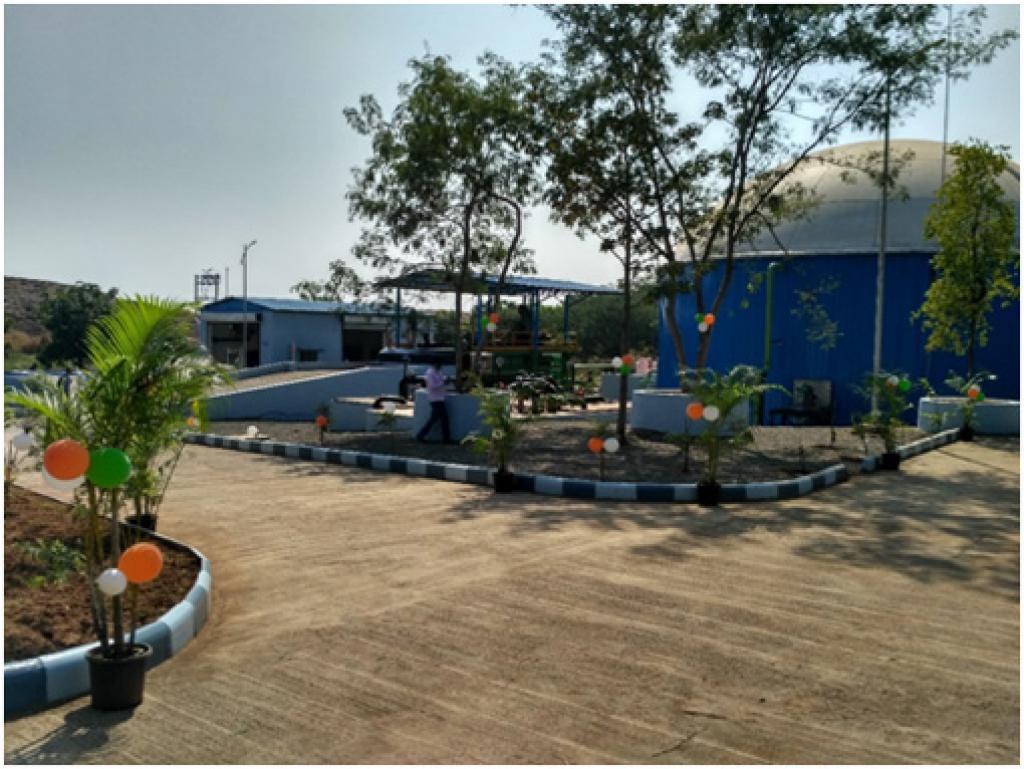Waste to Energy Plant, Nashik, Maharashtra
| Place: Nashik, Maharashtra Scale: Daily 10 to 15 tons of food and vegetable waste from approximately 500 restaurants and 10 to 20 tons of septage from 400 community toilets are collected by trucks and delivered to the plant Implementing mode: Design – Finance - Build – Own – Operate – Transfer (DFBOOT) Implementing agency: The Deutsche Gesellschaft für Internationale Zusammenarbeit (GIZ) GmbH Area: 6000 sq.m, provided by Nashik Municipal Corp (NMC).
|
Processing Capacity: 30 Tonne/day
|
|
Like many cities in India, the city of Nashik is also struggling with citywide Solid Waste and Waste¬water management. Therefore, there is an urgent need for an integrat¬ed approach to solid waste and wastewater management on the one hand and control of Green House Gas (GHG) emissions on the other hand. The Waste to Energy Project in Nashik is one such solution through co-processing of septage (faecal sludge) with organic solid waste and generating energy to create a sustainable business model. |
|
|
Organic waste and septage is treated separately. The screened organic waste is fed to a crusher and then mixed with septage to form slurry. The slurry is continuously agitated and forwarded to the digester. Option of pasteurization of septage using excess heat is kept open for further use of excess digestate to produce organic fertiliser. The co-fermentation process takes place in the bio-digester. After purification and reduction of moisture the gas is sent to a Combined Heat and Power (CHP) unit.
|
|
|
Daily 10 to 15 tons of food and vegetable waste from approximately 500 restaurants and 10 to 20 tons of septage from 400 community toilets is collected by trucks and delivered to the plant. Approx. 2,500m3 biogas and subsequently 3,300 kWh of electricity is produced per day. The generated power is fed into the power grid. The nutrient-rich effluent from the earlier treated septage can be used as moisturizing agent in the composting process, thus closing the loop of recycling and reusing waste. |
|
|
Mr Dirk Walther |
|


Share this article